
Tsomoriri Lake
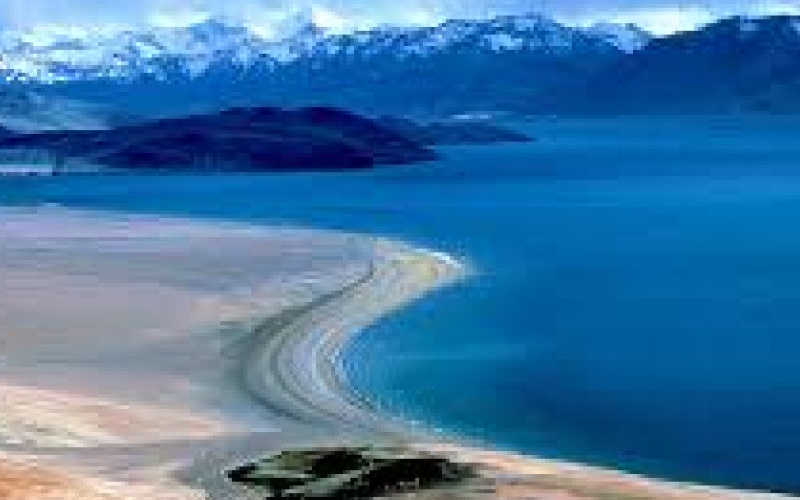 Picturesquely located in secluded, breathtakingly beautiful Rupshu Valley, the high-altitude Tso Moriri Lake is less than 250 kilometers southeast of Leh. Flanked by lofty mountains, this serene lake is about 4,000 meters above sea level. Tso Moriri is approximately 29 kilometers long and up to 8 kilometers wide. Tso Moriri attracts a range of wildlife, including migratory birds, marmots and rarely the Tibetan wolves.
Tso Moriri lake in Changthang region of Ladakh is one of the most beautiful, calm and sacred (for ladakhis) high altitude lakes in India. In fact, it is the largest high altitude lake in India that is entirely in Indian Territory. This beautiful blue pallet lake is about 7 KM wide at its broadest point and about 19 KM long. Being part of the wetland reserve under Ramsar site, it is actual known as Tsomoriri Wetland Conservation Reserve and one cannot pitch any tents or construct anything near the banks of the lake. It is the highest Ramsar site in the world. A large number of flora and fauna is found in the region. Since, it is very near to the Line of Actual Control, one need to get Inner Line Permit to visit Tso Moriri.
The beautiful multi shades of blue color offered by this lake along with a picturesque landscape around gives this place an extremely romantic feel and breathtaking feel. However, in actual reality the place is extremely harsh and difficult to survive especially in winters. There is only one cemented accommodation available around the lake and the facilities like electricity, medical aid, hot running water, western toilets etc. are rare to find. The lack of oxygen makes survival difficult if your body is not properly acclimatized to its high altitude and hence, one need to plan his/her journey extremely carefully to make it acute mountain sickness free vacation.
In January to March, Tso Moriri remains mostly frozen, extremely cold conditions with no options to stay around the lake. In April types, it starts to melt and starts transforming into the beautiful multi shades of blue colors off the shores. Then May, June, July and August is the peak tourist season but as compared to Pangong Tso it gets less number of tourist. How to Reach Tsomoriri Lake
Picturesquely located in secluded, breathtakingly beautiful Rupshu Valley, the high-altitude Tso Moriri Lake is less than 250 kilometers southeast of Leh. Flanked by lofty mountains, this serene lake is about 4,000 meters above sea level. Tso Moriri is approximately 29 kilometers long and up to 8 kilometers wide. Tso Moriri attracts a range of wildlife, including migratory birds, marmots and rarely the Tibetan wolves.
Tso Moriri lake in Changthang region of Ladakh is one of the most beautiful, calm and sacred (for ladakhis) high altitude lakes in India. In fact, it is the largest high altitude lake in India that is entirely in Indian Territory. This beautiful blue pallet lake is about 7 KM wide at its broadest point and about 19 KM long. Being part of the wetland reserve under Ramsar site, it is actual known as Tsomoriri Wetland Conservation Reserve and one cannot pitch any tents or construct anything near the banks of the lake. It is the highest Ramsar site in the world. A large number of flora and fauna is found in the region. Since, it is very near to the Line of Actual Control, one need to get Inner Line Permit to visit Tso Moriri.
The beautiful multi shades of blue color offered by this lake along with a picturesque landscape around gives this place an extremely romantic feel and breathtaking feel. However, in actual reality the place is extremely harsh and difficult to survive especially in winters. There is only one cemented accommodation available around the lake and the facilities like electricity, medical aid, hot running water, western toilets etc. are rare to find. The lack of oxygen makes survival difficult if your body is not properly acclimatized to its high altitude and hence, one need to plan his/her journey extremely carefully to make it acute mountain sickness free vacation.
In January to March, Tso Moriri remains mostly frozen, extremely cold conditions with no options to stay around the lake. In April types, it starts to melt and starts transforming into the beautiful multi shades of blue colors off the shores. Then May, June, July and August is the peak tourist season but as compared to Pangong Tso it gets less number of tourist. How to Reach Tsomoriri Lake
Lamayuru - The Moonscape for Tourist
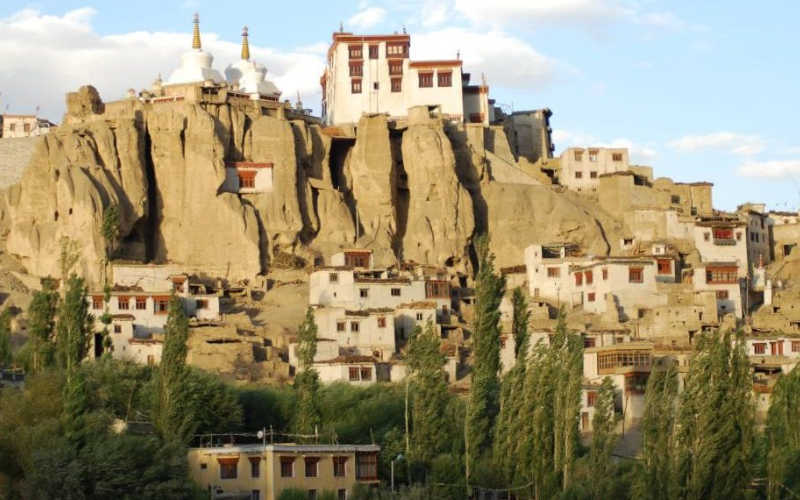 Lamayuru is on the Leh – Srinagar Highway, and can be visited from Leh (if you fly in) or on your way from Srinagar if you drive to Leh.
Lamayuru monastery is situated at a distance of 127 KM from Leh at a height of 3,510 meters. Lamayuru can easily be covered in a day return trip from Leh. Lamayuru is known for its monastery, and for its “lunar” landscape – quaintly promoted as a “Moonscape” for tourists. The landscape is certainly incredible with its spectacularly odd geological formations, though this is not unique to Lamayuru. Lamayuru monastery is ancient, built into the ‘moonscape’. It has some beautiful frescoes and frightening masks. Visitors can also see the glassed in meditation cave of the Lama Naropa. Lamayuru is a part of the Dri-Gungpa sector in western Ladakh.
Lamayuru was founded in the 11th century by Mahasiddacarya Naropa. Lamayuru has the appearance of a cave monastery with moonlike landscape. Lamayuru consisting of 5 buildings, the structure is in ruins today.
The annual festival known as Yuru Kabgyat is the major attraction of the monastery. Mask dance by the lamas are the highlight of the festival. Another important ritual followed during the festival is the burning of effigies. It stands for destruction of the ego in every individual. Besides its monastery, Lamayuru also attracts tourists for its landscape quite similar to the lunar terrain. How to Reach Lamayuru
Lamayuru is on the Leh – Srinagar Highway, and can be visited from Leh (if you fly in) or on your way from Srinagar if you drive to Leh.
Lamayuru monastery is situated at a distance of 127 KM from Leh at a height of 3,510 meters. Lamayuru can easily be covered in a day return trip from Leh. Lamayuru is known for its monastery, and for its “lunar” landscape – quaintly promoted as a “Moonscape” for tourists. The landscape is certainly incredible with its spectacularly odd geological formations, though this is not unique to Lamayuru. Lamayuru monastery is ancient, built into the ‘moonscape’. It has some beautiful frescoes and frightening masks. Visitors can also see the glassed in meditation cave of the Lama Naropa. Lamayuru is a part of the Dri-Gungpa sector in western Ladakh.
Lamayuru was founded in the 11th century by Mahasiddacarya Naropa. Lamayuru has the appearance of a cave monastery with moonlike landscape. Lamayuru consisting of 5 buildings, the structure is in ruins today.
The annual festival known as Yuru Kabgyat is the major attraction of the monastery. Mask dance by the lamas are the highlight of the festival. Another important ritual followed during the festival is the burning of effigies. It stands for destruction of the ego in every individual. Besides its monastery, Lamayuru also attracts tourists for its landscape quite similar to the lunar terrain. How to Reach Lamayuru
Pangong Lake
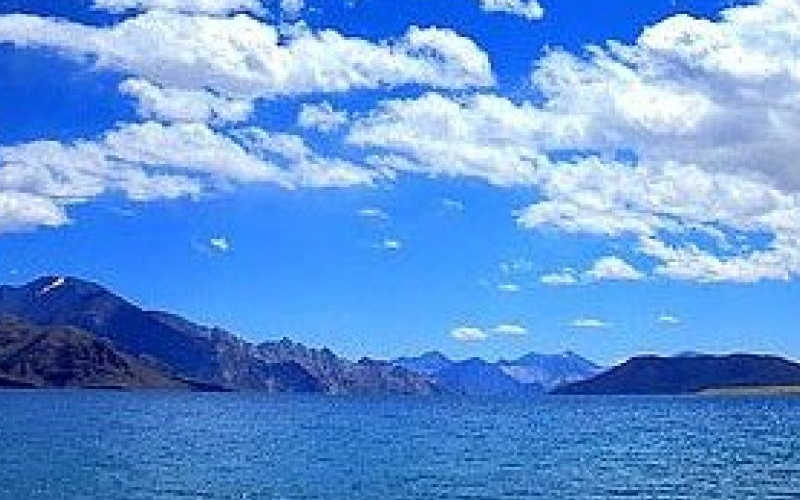 In Ladakh, you never know what surprise nature has in store for you. Pangong Lake, situated at a height of almost 4,350m, is the world’s highest saltwater lake. Its water, which seems to be dyed in blue, stand in stark contrast to the arid mountains surrounding it. Extending to almost 160km, one-third of the Pangong Lake lies in India and the other two-thirds in China.
Pangong Lake, one of the most famous lakes in Leh Ladakh, derives its name from the Tibetan word, “Pangong Tso”, which means “high grassland lake”. You could spend hours in contemplation here, and still not have enough of its beauty. Pangong Lake is also known to change colors, appearing blue, green and red at different times. If you have decided to go on a trip to Ladakh anytime soon, don’t forget to visit the Pangong Lake. The beauty which awaits you there cannot be described in words. It has to be seen, felt and absorbed within yourself. How to Reach Pangong Lake
In Ladakh, you never know what surprise nature has in store for you. Pangong Lake, situated at a height of almost 4,350m, is the world’s highest saltwater lake. Its water, which seems to be dyed in blue, stand in stark contrast to the arid mountains surrounding it. Extending to almost 160km, one-third of the Pangong Lake lies in India and the other two-thirds in China.
Pangong Lake, one of the most famous lakes in Leh Ladakh, derives its name from the Tibetan word, “Pangong Tso”, which means “high grassland lake”. You could spend hours in contemplation here, and still not have enough of its beauty. Pangong Lake is also known to change colors, appearing blue, green and red at different times. If you have decided to go on a trip to Ladakh anytime soon, don’t forget to visit the Pangong Lake. The beauty which awaits you there cannot be described in words. It has to be seen, felt and absorbed within yourself. How to Reach Pangong Lake
Nubra Valley
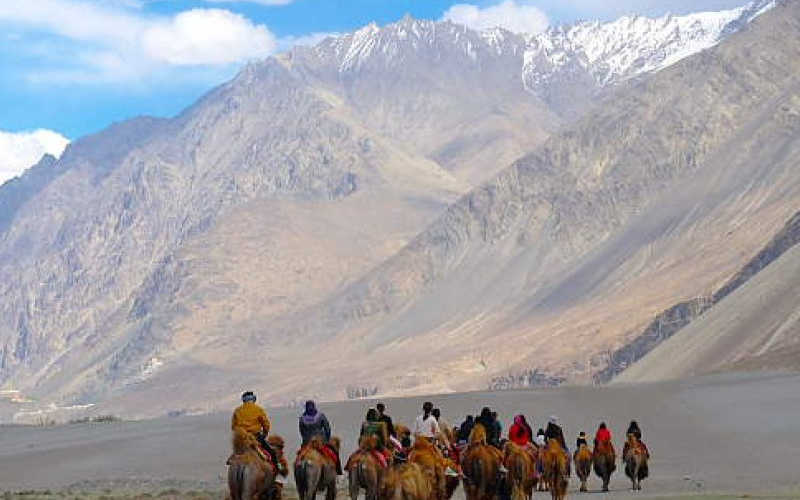 The Nubra Valley, once on the trading route that connected eastern Tibet with Turkistan via the famous Karakoram Pass, is the most recently opened area of Ladakh. Nubra invites you to a trip back in time into a nearly forgotten ‘Shangri La’. With breathtaking views and delightfully hospitable inhabitants, it is quite an experience. How to Reach Nubra Valley
The Nubra Valley, once on the trading route that connected eastern Tibet with Turkistan via the famous Karakoram Pass, is the most recently opened area of Ladakh. Nubra invites you to a trip back in time into a nearly forgotten ‘Shangri La’. With breathtaking views and delightfully hospitable inhabitants, it is quite an experience. How to Reach Nubra Valley
Magnetic Hill
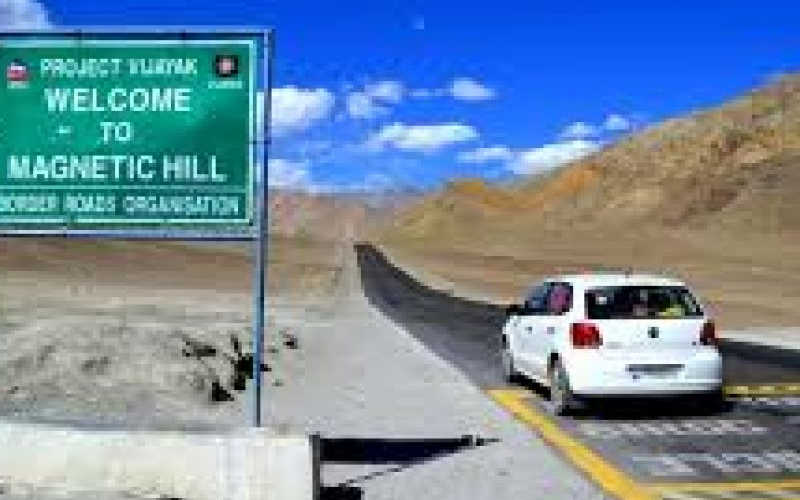 In your travels around Leh-Ladakh, you will come across fascinating sights which arouse your curiosity to no end. One such sight attraction is Magnetic Hill, the place where gravity takes a backseat. Lying at a distance of around 30 km from Leh, the Magnetic Hill is marked by a yellow signboard which reads “The Phenomenon That Defies Gravity”. It also instructs you to park your vehicles in the box marked with a white point on the road, which is known as the Magnetic Road. When parked at the indicated spot, vehicles begin moving forward at a speed of almost 20km/h.
Magnetic Hill lies on the Leh-Kargil-Srinagar National Highway in the Trans-Himalayan region. To the east of the Magnetic Hill flows the Sindhu River, making the surroundings a photographer’s delight. How to Reach Magnetic Hill
In your travels around Leh-Ladakh, you will come across fascinating sights which arouse your curiosity to no end. One such sight attraction is Magnetic Hill, the place where gravity takes a backseat. Lying at a distance of around 30 km from Leh, the Magnetic Hill is marked by a yellow signboard which reads “The Phenomenon That Defies Gravity”. It also instructs you to park your vehicles in the box marked with a white point on the road, which is known as the Magnetic Road. When parked at the indicated spot, vehicles begin moving forward at a speed of almost 20km/h.
Magnetic Hill lies on the Leh-Kargil-Srinagar National Highway in the Trans-Himalayan region. To the east of the Magnetic Hill flows the Sindhu River, making the surroundings a photographer’s delight. How to Reach Magnetic Hill
© Bonjour Media. All Rights Reserved.